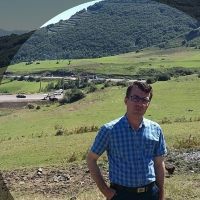Promoting the Concept and Assessment Approaches of Human Disturbance
Any event that relatively disrupts ecosystems, a community, or the structure of a population, and whose resources can be changed in context or in the environment, is called disturbance. In recent decades, due to the expansion of human needs and the consequences of land-use change, the basic resources of the Earth planet have been significantly damaged. The magnitude of the effects of this type of disturbance on the structure and function of ecosystems depends on several factors such as the structure and strength of the damaged ecosystems before the disturbance occurs, and the type, size, and regime of the disturbance. Accordingly, complex interactions between disturbances and ecosystems create spatial and temporal heterogeneity in ecosystem processes across a landscape.The dynamics of disturbance affect the composition, performance, structure, and processes that govern ecosystems. Large-scale ecosystem disturbances (LEDs) such as fires, hurricanes, insect outbreaks, dust storms, glacial currents, heat waves, and land use occur at various scales in most ecosystems around the world. Disturbances are mainly controlled by the intensity, persistence, frequency, timing, and magnitude of the spatial effects (including the size and shape of the affected area) caused by them. Ecological disturbances can occur naturally, such as fires, floods, avalanches, hurricanes, or volcanoes, and can even completely change a habitat. They can also be caused by humans such as road construction, agriculture, pollution, invasion, urban sprawl, point source pollution, conversion of natural vegetation to developed areas, entry of nutrients and pesticides from agricultural and urban resources, mining operations, and canal remediation, and flooding. These disturbances often change the timing or amount of hydrological flow, temperature, and water chemistry, and increase runoff, erosion, and sediment. Natural factors, along with human pressures and interventions to meet rational and sometimes irrational needs, are among the factors causing depletion and changes in habitats and natural cover, including forests. These changes gradually disintegrate the landscape of the land, resulting in the spatial disturbance. The spatial disturbance is one of the most important processes resulting from changes in the landscape, which involves the conversion of a particular cover or habitat into smaller, less relevant parts and a reduction in their stability and viability.The emergence of human-induced disturbances is not new to ecologists, but with the increase in human population and resource demand, the extent of many of these disturbances has increased, as these factors increasingly affect areas that previously had alittle human impact. One of the needs of planning for effective and sustainable management and protection is a better understanding and awareness of the process of changes in the landscape pattern, the phenomenon of disturbance of ecologists, and its spatial patterns.
This is a review study that has been conducted with the aim of explaining and analyzing different approaches and indicators for assessing ecosystem disturbance. In order to achieve the desired goal, to collect the specialized information studied, the method of document review (scientific and research, Internet databases) was used and different approaches and indicators for assessing ecosystem disturbance were extracted and analyzed. The following sets are presented in the context of ecosystem disturbance assessment. 1- Approach based on landscape fragmentation dynamics 2- Hydrosedimentological disturbance index 3- MODIS global distrubance index 4- Ecological risk index 5- Human disturbance activity index 6- Modeling spatial disturbance using landscape metrics 7- Quantifying human disturbance by EMAP method 8- Species-abundance models 9- Evaluation of human disturbances on vegetation characteristics of forest stands
Reviewing 16 case studies specifically related to the disturbance assessment led to exploring nine various approaches. In these approaches, different environmental, social, and economic indicators were used and various tools such as remote sensing and landscape metrics were applied. Most of these studies are based on conceptual and index-based evaluations and have been conducted mainly in the United States, the Mediterranean, China, Italy, Spain, and Brazil. In all approaches to assessing human disturbance, it is explicitly stated that disturbance management is a complex process and requires a thorough understanding of various ecological and social aspects.Ecological knowledge and perspectives on disturbance are critical to addressing the challenges to human well-being and biodiversity by changing disturbance regimes. Management and politics are two aspects of how society chooses to interact with disturbance regimes. For well-being, in many cases, the best results require the adaptation of human societies to disturbance regimes and require short- and long-term planning before perturbations. Given that all consequences are possible at the same time and not all values can be protected. Management ecosystems in the field of disturbance require a combination of insights and knowledge from several disciplines from ecology (how will ecosystems respond to improvement?) To sociology (what is the acceptable degree of disturbance for a residential area?). As we learn more about the ecological process, we must confront the old ecological perspectives and public policies that ignore the consequences of disturbance and assume a stable environment in which systems are in equilibrium and the overall composition of species and relative abundance over time. Disturbance management approaches are highly variable and depend on the goal they pursue. In some cases, the goal may be to maintain a disturbance regime within the natural range of diversity. In other words, the goal may be to completely suppress disturbance by protecting valuables, such as residential areas. Managers may use several strategies to achieve a common goal, but determining the most effective strategy requires accurate knowledge of the local perspective. Human disturbance activities are the physical stressors of ecologists for rivers and streams, lakes, and wetlands. Measuring the extent and severity of human disturbances near-natural environments gives scientists a better understanding of the impact of human populations on the natural environment. Understanding and combining disturbance processes, both natural and man-made, in resource management is essential to meeting the resource needs of future generations. Based on the summary of all studies, the present study emphasizes the development of a comprehensive assessment method in the watershed planning unit, taking into account all economic, social, political, hydrological, climatic, and biological dimensions, based on which conservation and management measures can be taken.
- حق عضویت دریافتی صرف حمایت از نشریات عضو و نگهداری، تکمیل و توسعه مگیران میشود.
- پرداخت حق اشتراک و دانلود مقالات اجازه بازنشر آن در سایر رسانههای چاپی و دیجیتال را به کاربر نمیدهد.




